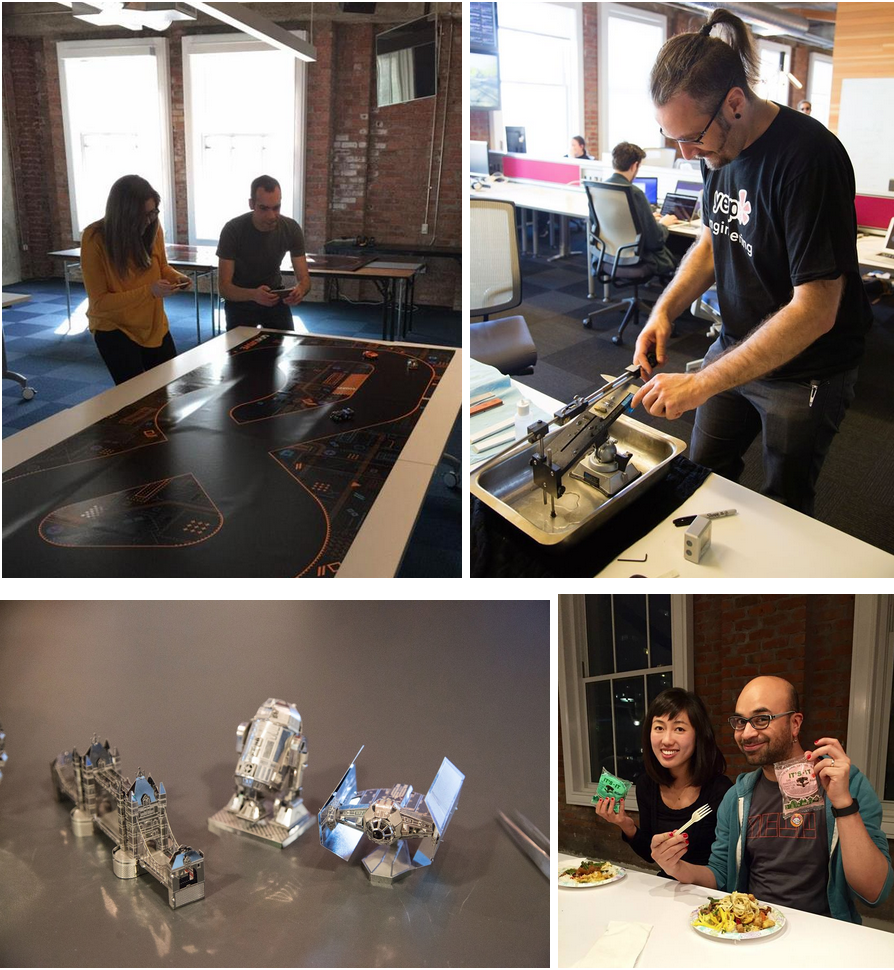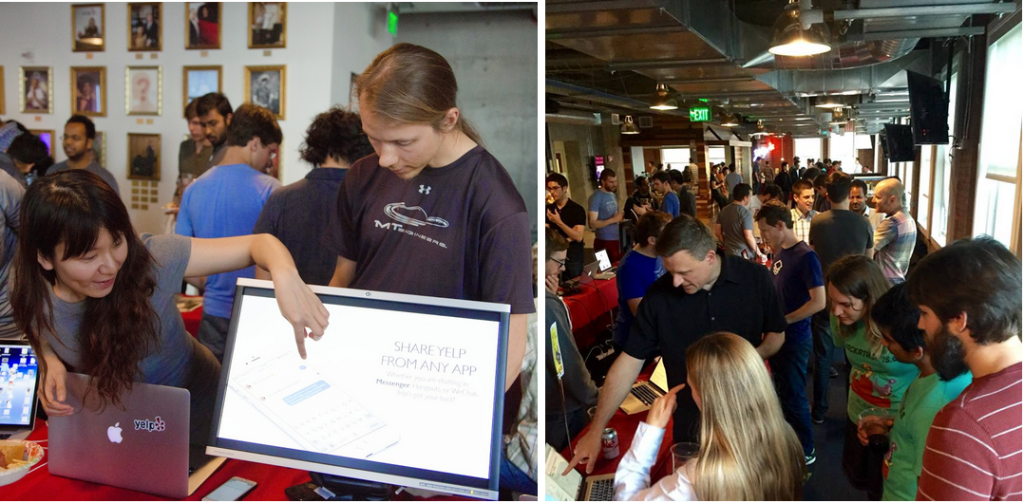Yelp Hackathon 16: What the hack is a Kühlkdebeulefotoapparat

-
Srivatsan S., Engineering Manager
- Mar 27, 2015
A couple of weeks ago, the Yelp Product & Engineering teams put their creative minds together to work on our coolest, funniest and hardcore-est of ideas at the 16th edition of our internal Hackathon. As always, the food was plentiful- our kitchens were stacked with delicious catered food, fresh fruits and snacks, gourmet coffee, and, wait for it, ice-cream sandwiches! While all that deliciousness fueled our bodies, our minds were fueled by do-it-yourself Metal Earth 3D model kits and metal-etching workshops. If that wasn’t enough, we even got a chance to race these amazing Anki cars.

Our VP of Engineering kicking off the proceedings with a transatlantic mimosa toast
Over 60 fantastic projects came out of our engineering offices in San Francisco, Hamburg and London - ideas that ranged from visualizations of our rich dataset to hardcore machine learning applications to nifty internal tools designed to skyrocket developer productivity and of course, the incredible out-of-the-box projects.

The unwavering constant of Yelp Hackathons - a medley of work, play and food
Speaking of out-of-the-box projects, the dynamic duo of Yoni D. and Matthew K. decided to reinvigorate a certain 19th century invention. What started off as an idea to self-develop photographic film quickly evolved into a project to create their very own camera using the swanky 3D printer that we have here in our San Francisco office. Using the design for an existing pinhole camera, they 3D printed parts of the camera, painted and assembled them to create a product as hardcore as its name - the Kühlkdebeulefotoapparat. Don’t know what means? Rumor has it that it has something to do with the duo’s last names. And it takes pretty good photographs too.

Another fancy piece of gadgetry that came out of our top-secret 3D printing lab
While some folks were busy fashioning things out of thin air, others joined forces to solve an interesting problem that we face here at Yelp. We build a ton of amazing features every single day that leave us with a lot of data with varying tools to visualize them. We’ve gotten really comfortable using Kibana to expose our data in Elasticsearch, but could we somehow use the same UI that we know and love to visualize our great data on Redshift? A team comprised of Garrett J., Jimming C. and Tobi O. decided to answer exactly that. Poking into the Kibana code (yay open source!), they realized that while the project was still under active development, it had a well-defined interface to query ElasticSearch. They built a translation server that modeled a similar interface for Redshift that Kibana could understand. The result - the ability to create new dashboards and visualizations that will help us gain more insight into our data!

Our hackers showing off their projects at a “science-fair” style exhibition
While some folks spent their time coming up with elegant solutions to hard problems, a team comprised of Duncan C. and Matthew M. did something, um, quite the opposite. In the true spirit of being “unboring,” they created “DumbStack” - an insanely complicated web of machinery comprised of Webfaction, Slack, AppEngine, SQS, EC2, Heroku, Tumblr, Netcat, Github and Google Translate to solve a simple problem - posting a tweet.

Definitely the easiest way to post to Twitter, right?
This project certainly would’ve made Rube Goldberg proud!
Have some creative ideas brewing in your head? Why don’t you come join forces as we embark on our next awesome Hackathon this summer. We are constantly on the lookout for amazing engineers, product managers and data scientists to bolster our team. Check out our exciting product and engineering job openings at www.yelp.com/careers and apply today.
Hack on!